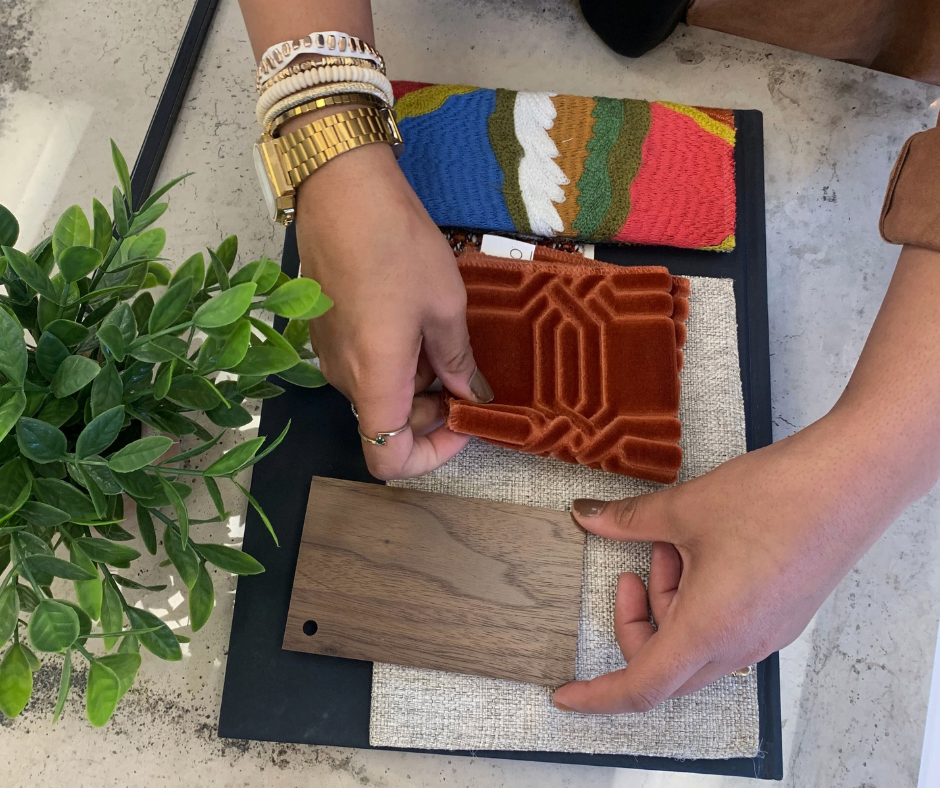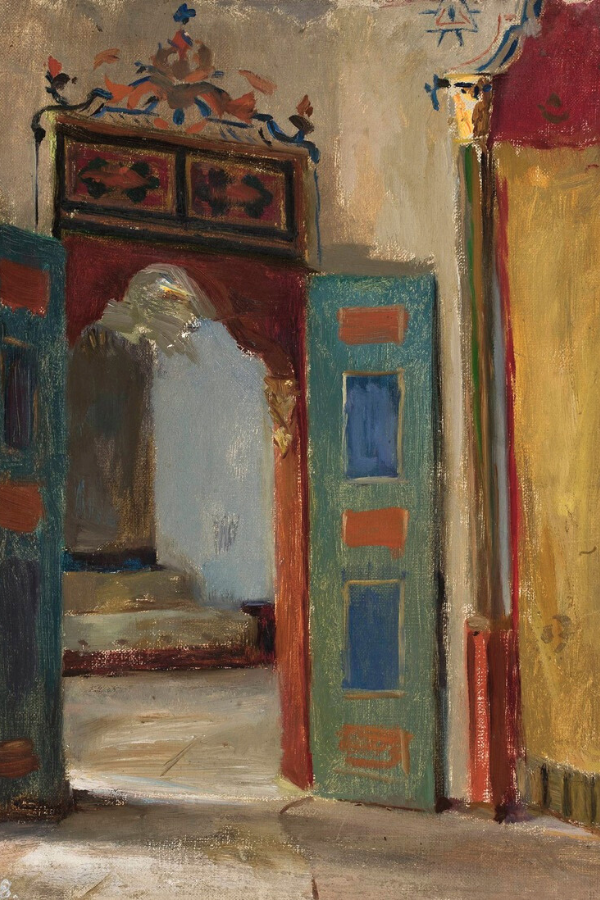
Warm Woods Are In: Why Dark Tones Are Replacing Pale Neutrals
Summary
Dark wood is officially back, and it’s not just for historic homes. From sculptural accent pieces to grounding furniture silhouettes, dark walnut, espresso, and stained oak are showing up in both traditional and contemporary spaces. This 2025 trend plays beautifully with warm neutrals, layered textures, and natural light.
Reflection Questions
What mood or feeling do you want your space to evoke—and how might warm woods support that?
Are there any antique or vintage dark wood pieces you could reintroduce or repurpose in a modern way?
What textures, tones, or materials in your current space could help balance the visual weight of darker wood furniture?
Journal Prompt
How do the materials, textures, and tones I surround myself with influence how I feel at home? What role does warmth—visually or emotionally—play in how I design my spaces or guide my clients?
Use this as an opportunity to think beyond trends and reconnect with the emotional resonance of design choices.
From dark wood furniture to wall paneling and ceiling beams, this bolder aesthetic is taking over traditional and contemporary homes all across the country. We first noticed it late last year but were shocked to see so much dark wood furniture at the April 2025 High Point Market!
Whether accent pieces like stools and end tables or monumental furniture pieces, dark wood tones were everywhere this season. While a bit unusual for spring, we must admit that this interior design trend actually worked surprisingly well when set against neutral color palettes.
Read on for our take.
Dark Wood in Contemporary Spaces: Bold Statement or Bizarre Design Choice?
For years, dark wood was relegated to the antique-filled traditional interiors of yore—think paneled libraries, heirloom armoires, and ornate dining sets. But in 2025, it’s clear that these rich tones are no longer tethered to the past.

At High Point Market this spring, we saw espresso-stained oak, walnut, and even near-black finishes reimagined for modern living. These tones now appear on sleek cabinetry, minimalist coffee tables, and sculptural seating that feels anything but old-fashioned. When paired with other Spring trends—like curved sofas, black leather, and saturated colors—dark wood furniture truly shines.
Our Verdict: Dark Wood is a Moody Design Darling
Used well, dark woods add visual weight and enhance architectural integrity. They ground a room, create striking contrast, develop an inviting atmosphere, and offer a welcome alternative to the pale, washed-out finishes that have dominated the last decade. In a modern setting, a walnut credenza or mahogany headboard can anchor a space much in the same way a dramatic stone or patterned textile might—drawing the eye to a focal point without overwhelming it.
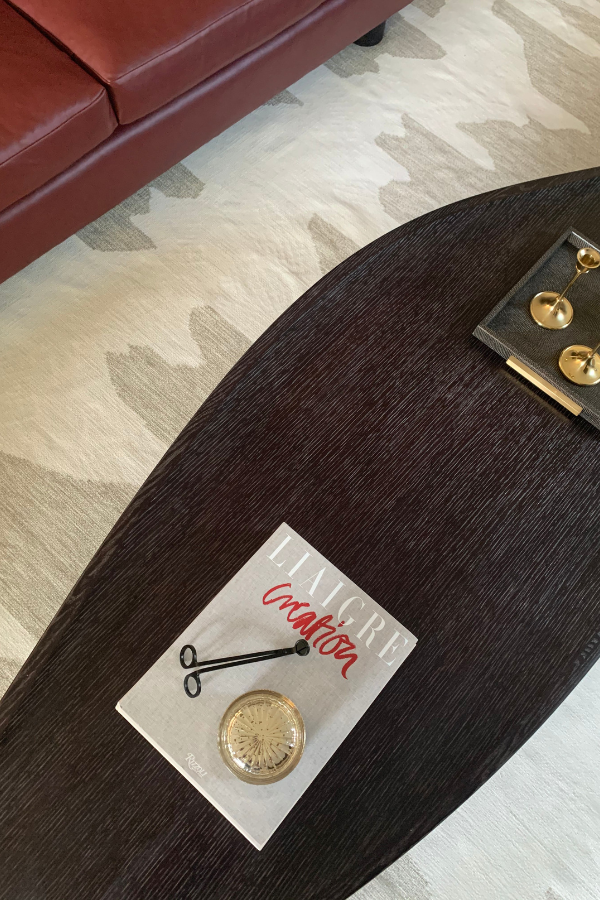
Of course, the key is balance. Without thoughtful contrast—walls drenched in white paint, a neutral backdrop, mixed materials in textiles and upholstery, or strategic lighting—dark wood can feel either far too heavy or overly formal. Natural light is also needed to prevent the furniture from visually sinking into the floor.
Now, we aren’t implying that reviving the old English manor isn’t worthwhile, but most of us seek to add interest, warmth, character, and intention to the clean lines of contemporary interiors. For example, dark wood doesn’t overwhelm the dining room pictured above. The original turn-of-the-century detailing brings gravitas, but the modern styling—like the sculptural stools and boldly veined stone table—makes it feel fresh rather than frozen in time. This space feels collected instead of “themed.”
Why Designers Love It
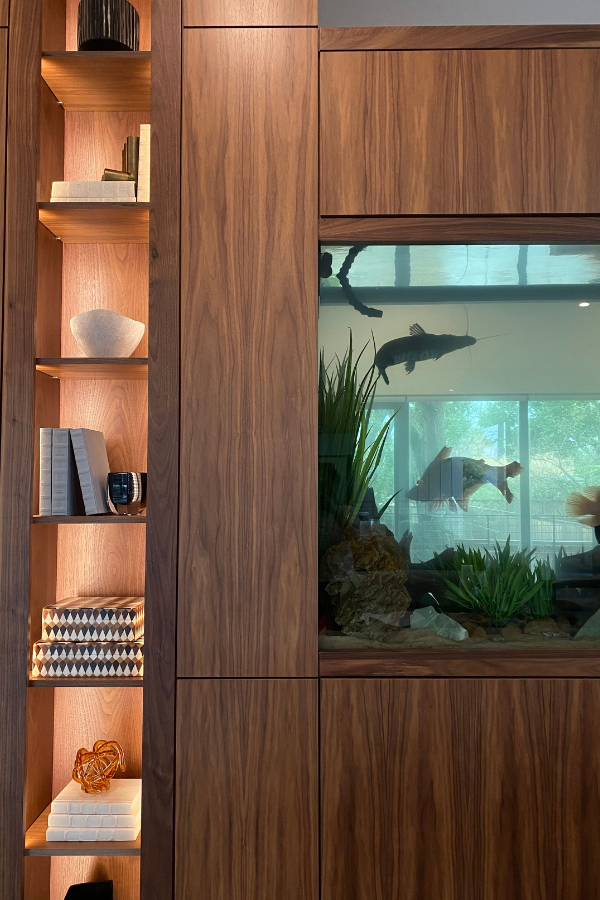
Interior designers are leaning into deeper tones like walnut, mahogany, and stained oak for their warmth, visual weight, and timeless appeal. Whether you draw from Mid-Century Modern spaces filled with walnut or antique interiors much farther in the past, these rich tones are compatible with a wide range of styles. They complement the current move toward layered palettes, natural materials, and tactile depth.
In Apartment Therapy’s 2025 designer survey, Becca Meyer of BB Meyer Design noted that dark wood furniture is “one to watch on the secondhand marketplace.” Quality and character are easy to find in hand-crafted vintage designs, but we certainly saw a few beautifully done dark wood furniture pieces at High Point this spring. Meanwhile, Alicia Hassen of Brooklinteriors shared her picks, which include “Nightstands, coffee tables, dressers, and commodes.” Why? “The craftsmanship and quality of wood lasts for a lifetime!”
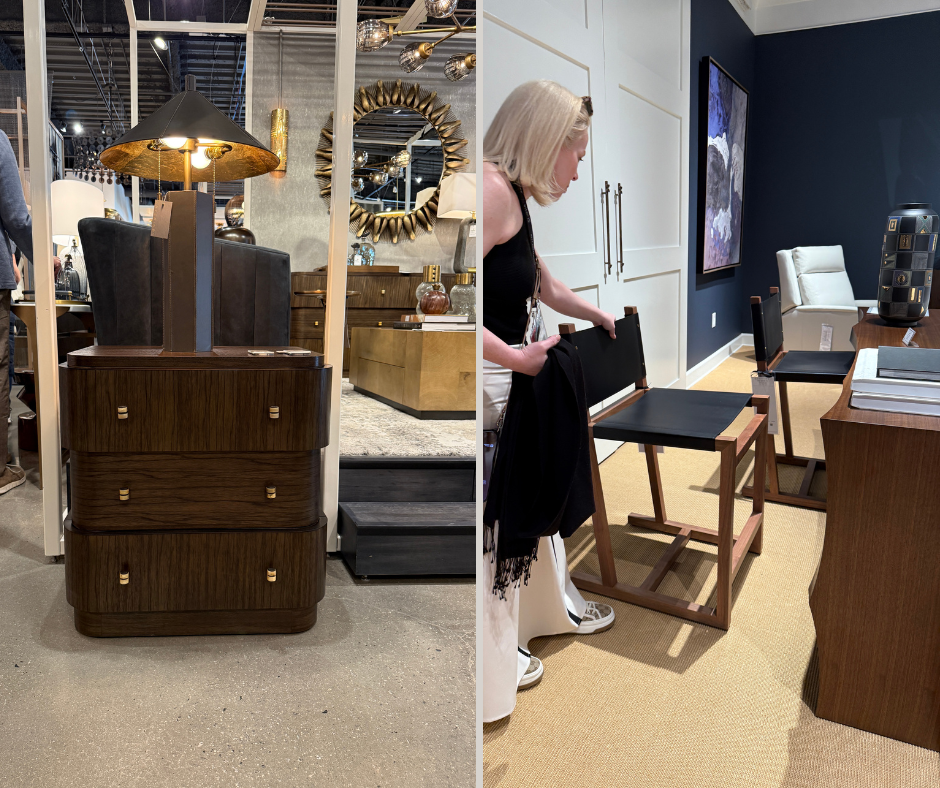
Used in living rooms, bedrooms, or dining areas, dark woods add an almost architectural weight to a space. Designers are embracing their ability to anchor rooms —especially when paired with soft textiles, natural stone, and earthy color palettes. This isn’t just nostalgia—it’s the return of timeless materials reimagined for how we live now.
Dark Wood Is Not Just for Traditional Homes
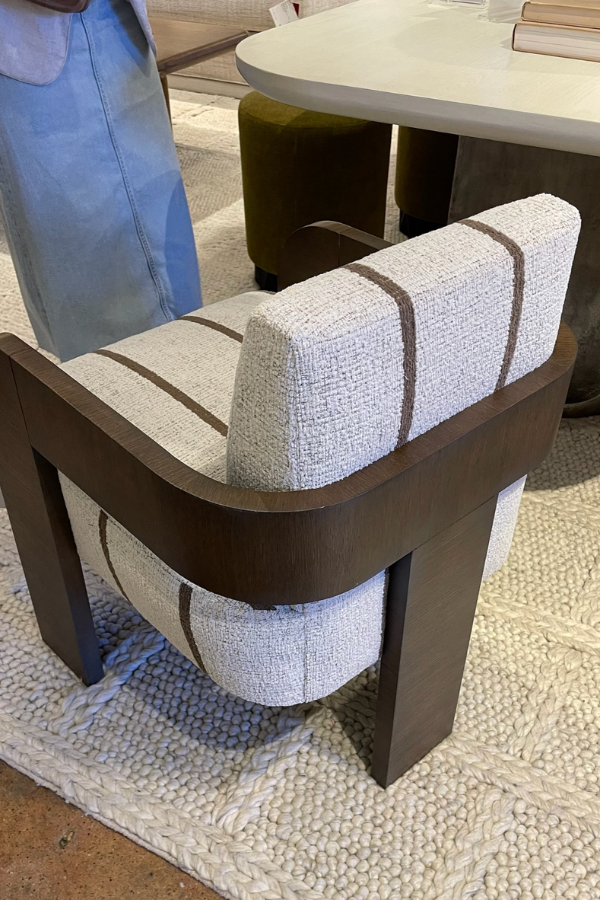
Dark wood no longer belongs solely to historic brownstones or Victorian parlors. Today’s interiors are proving just how modern, even minimal, these finishes can feel—especially when shaped into streamlined silhouettes or set alongside contemporary materials.
Fuel your creative fire & be a part of a supportive community that values how you love to live.
subscribe to our newsletter
*please check your Spam folder for the latest DesignDash Magazine issue immediately after subscription

Country Living reports, “Dark wood is having a bit of a moment,” calling out a growing love for “the depth and darkness of walnut, mahogany and oak” over the once-dominant pale woods. As stylist Amanda Smith Corston puts it, “Incorporating dark wood adds depth, warmth and a touch of elegance… the versatility of dark wood makes it an excellent base for any room.”
We saw this firsthand last week when sculptural sideboards, slab-leg tables, and warm, wood-wrapped casegoods made a strong showing—even in otherwise airy spaces.
How to Use Dark Woods Well
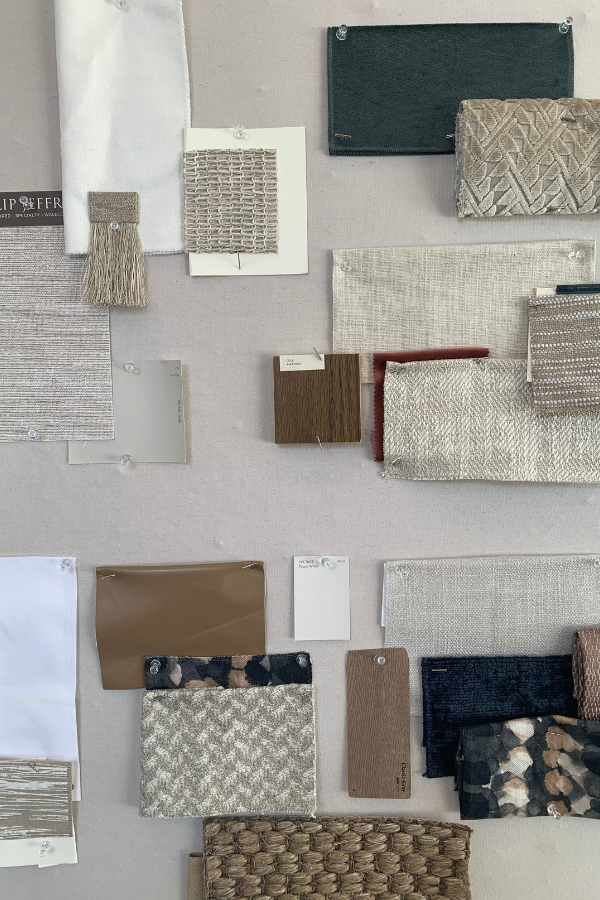
Whether you’re just beginning to dip a toe in the dark wood revival or you’re prepared to dive in with both feet, there’s an art to making it feel fresh instead of fussy. Rich walnut, espresso, and chocolate tones can make a room feel either edgy or elegant but thoughtful styling is essential for balance.
Source Inspiration from the Natural World
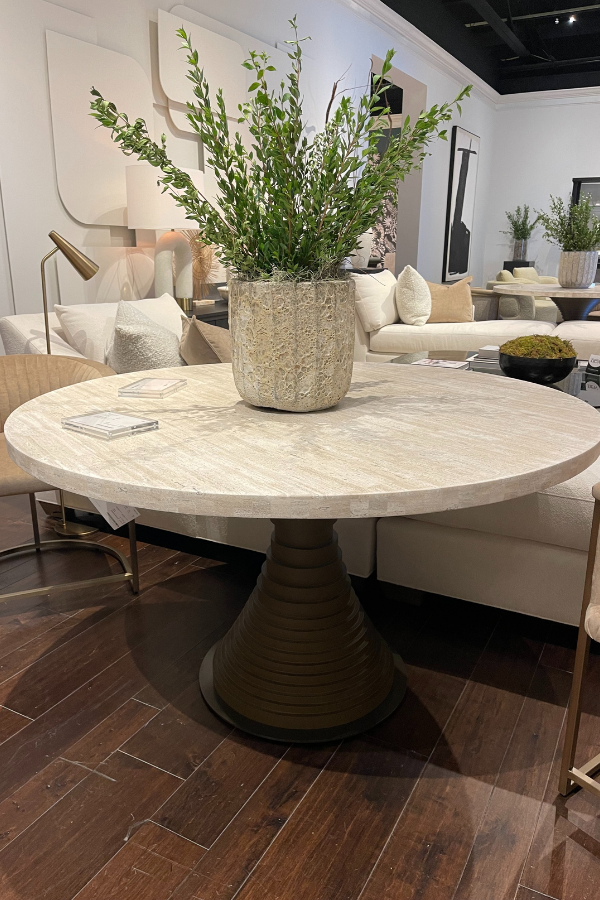
First, take your cues from nature. Warm woods pair beautifully with ochre, rust, camel, and other earth-inspired hues. These palettes not only soften the boldness of the wood but also echo the broader return to natural materials we’ve seen across interiors this year.
Work with Natural Light and Pale Color Palettes
Use dark woods strategically to anchor light and airy spaces. In a room dominated by creamy upholstery and pale rugs, a dark coffee table—like the one seen at High Point Market with sculptural legs and a matte finish—offers contrast without visual heaviness. It’s all about grounding, not overpowering.
Start Small Instead of Going “All-In”
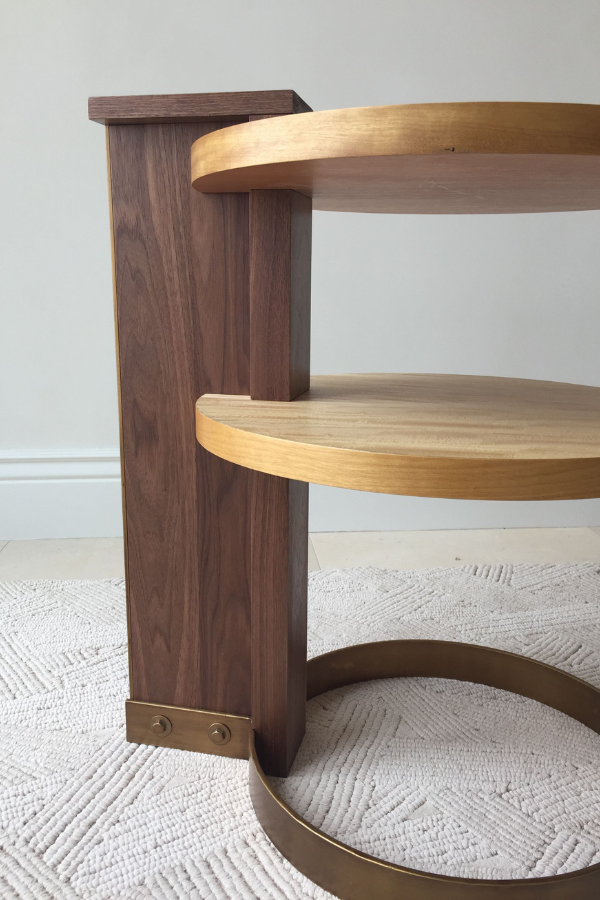
If you’re not ready to commit to an entire set, start small. Think reeded consoles, nightstands with aged bronze hardware, or dining chairs with dark wood edging. One of our favorite examples is Chaddock’s lounge chair with plush, boucle-like upholstery and a curved dark wood frame. Pictured below, it’s a stunning piece.
Layer Textures for More Visual Interest
Don’t forget to layer your textures. Pair dark wood pieces with nubby linens, hand-knotted rugs, matte ceramics, or even velvet. The juxtaposition keeps the material feeling modern and tactile. The Liaigre-style coffee table paired with leather seating and brass accents is an ideal illustration.
In our opinion, dark and woods work best when they’re treated as punctuation instead of the entire story. Make them intentional, well-placed, and richly layered. Even a single well-chosen piece can shift the entire feel of a space.
Final Thoughts
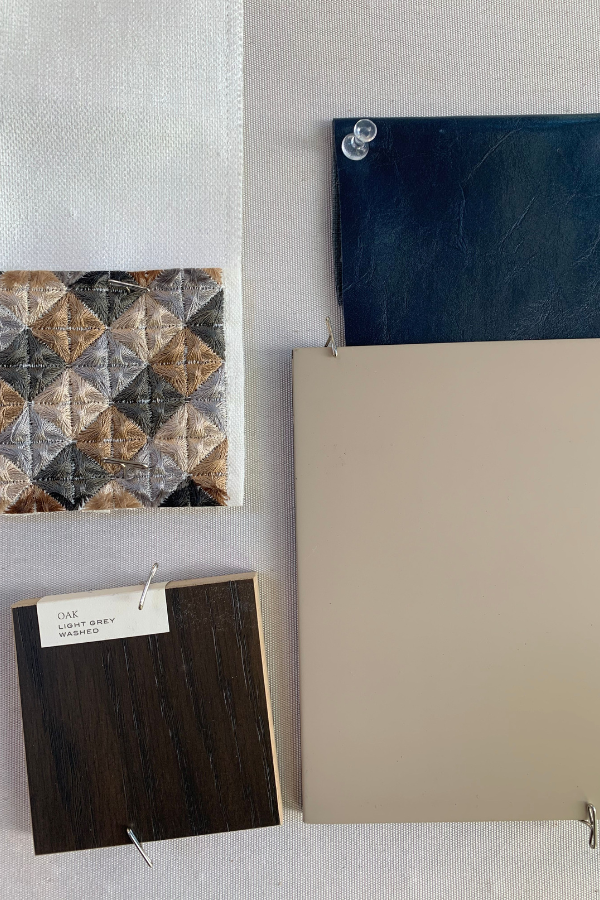
In a season often associated with pale tones and breezy minimalism, the reemergence of dark woods feels both bold and comforting. Whether it’s a hand-rubbed walnut dining table or a sculptural oak chair, darker woods bring weight and drama to a space without overwhelming it.
As with every High Point Market, this trend doesn’t stand alone. It aligns beautifully with the broader design values shaping 2025: a return to authenticity, an emphasis on sustainability, and a collective embrace of mood-driven interiors (remember dopamine decor?).
Which trends did you spot at High Point Market this Spring? Let us know in the comments below and join the Community for more insights.





